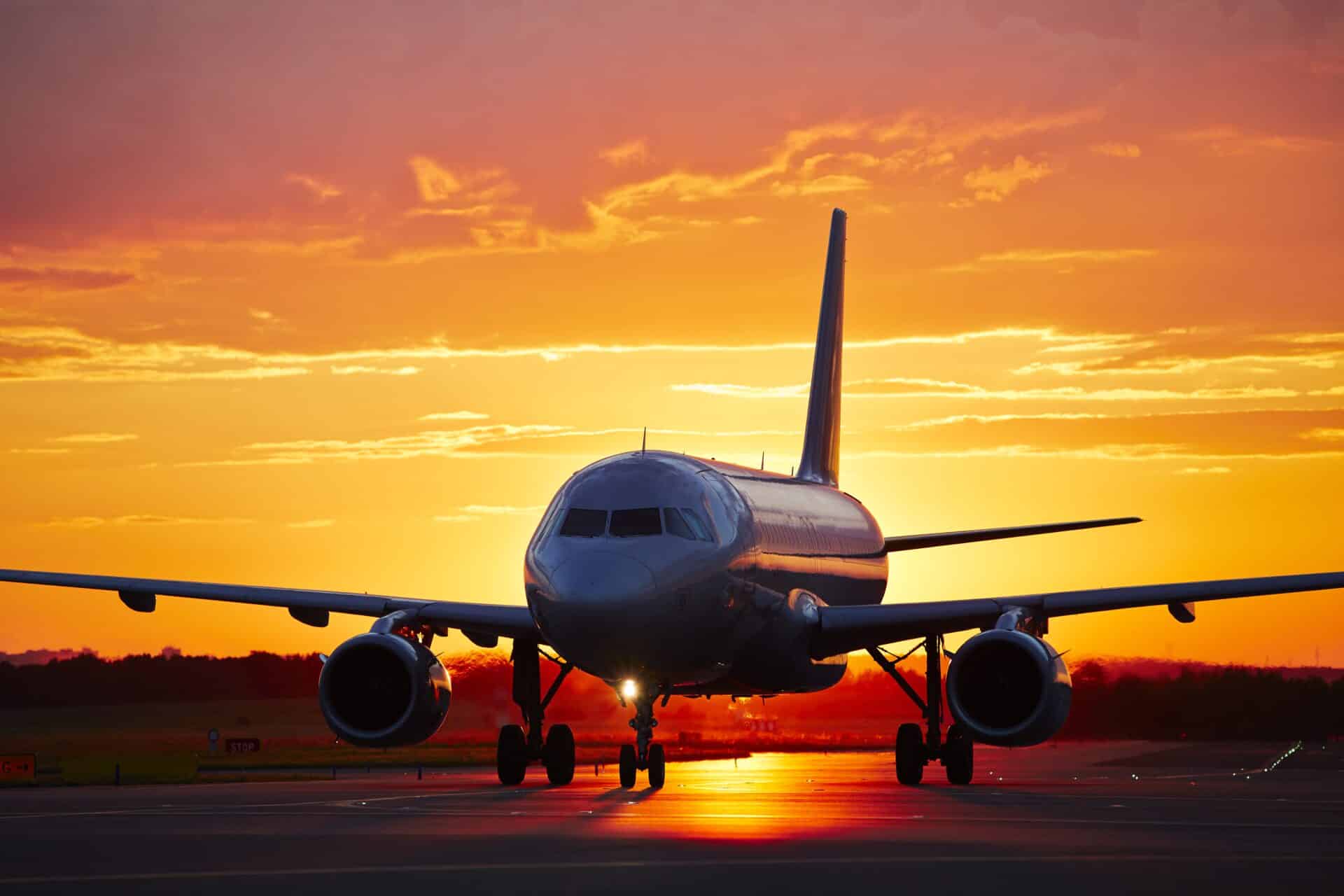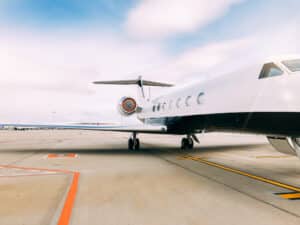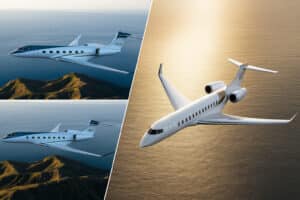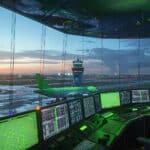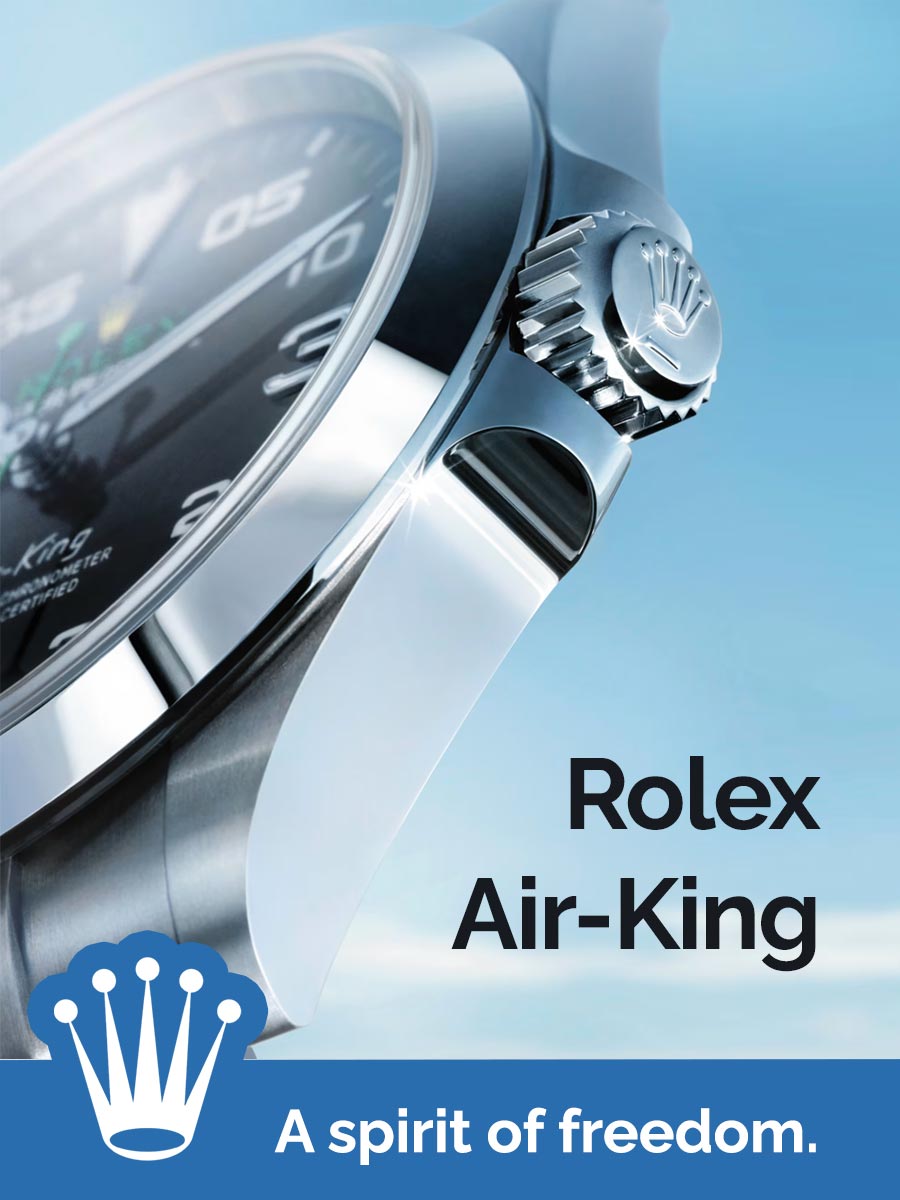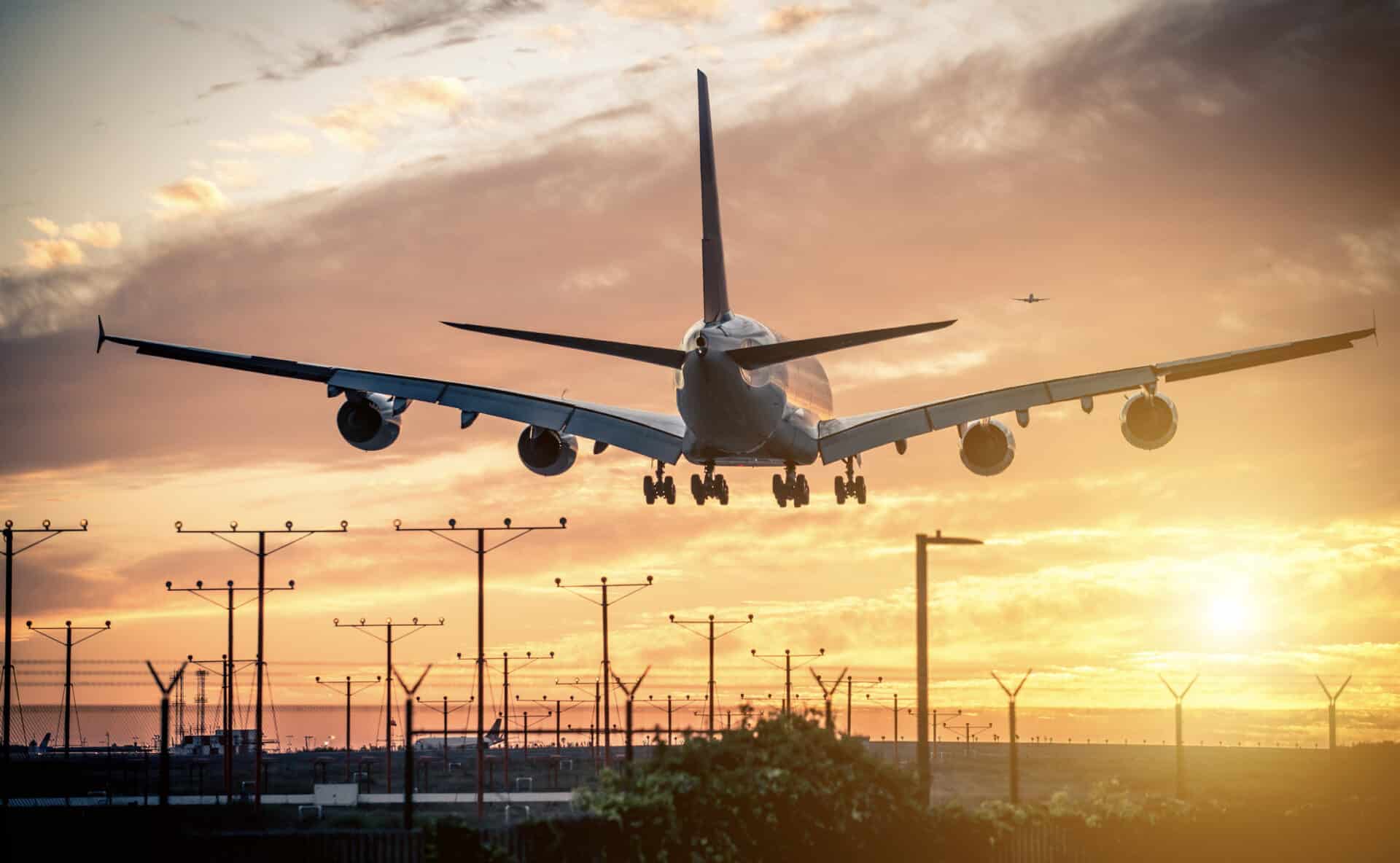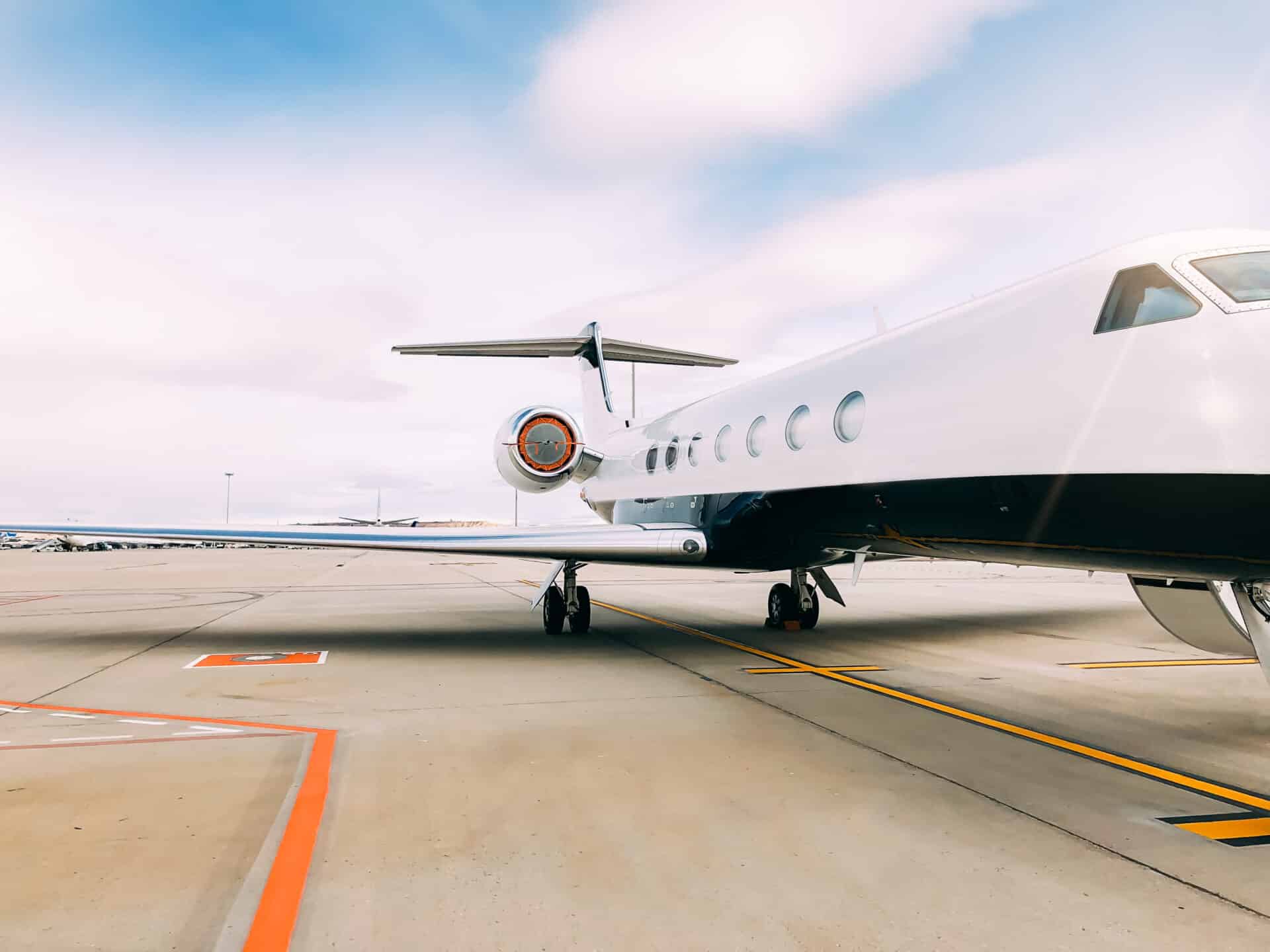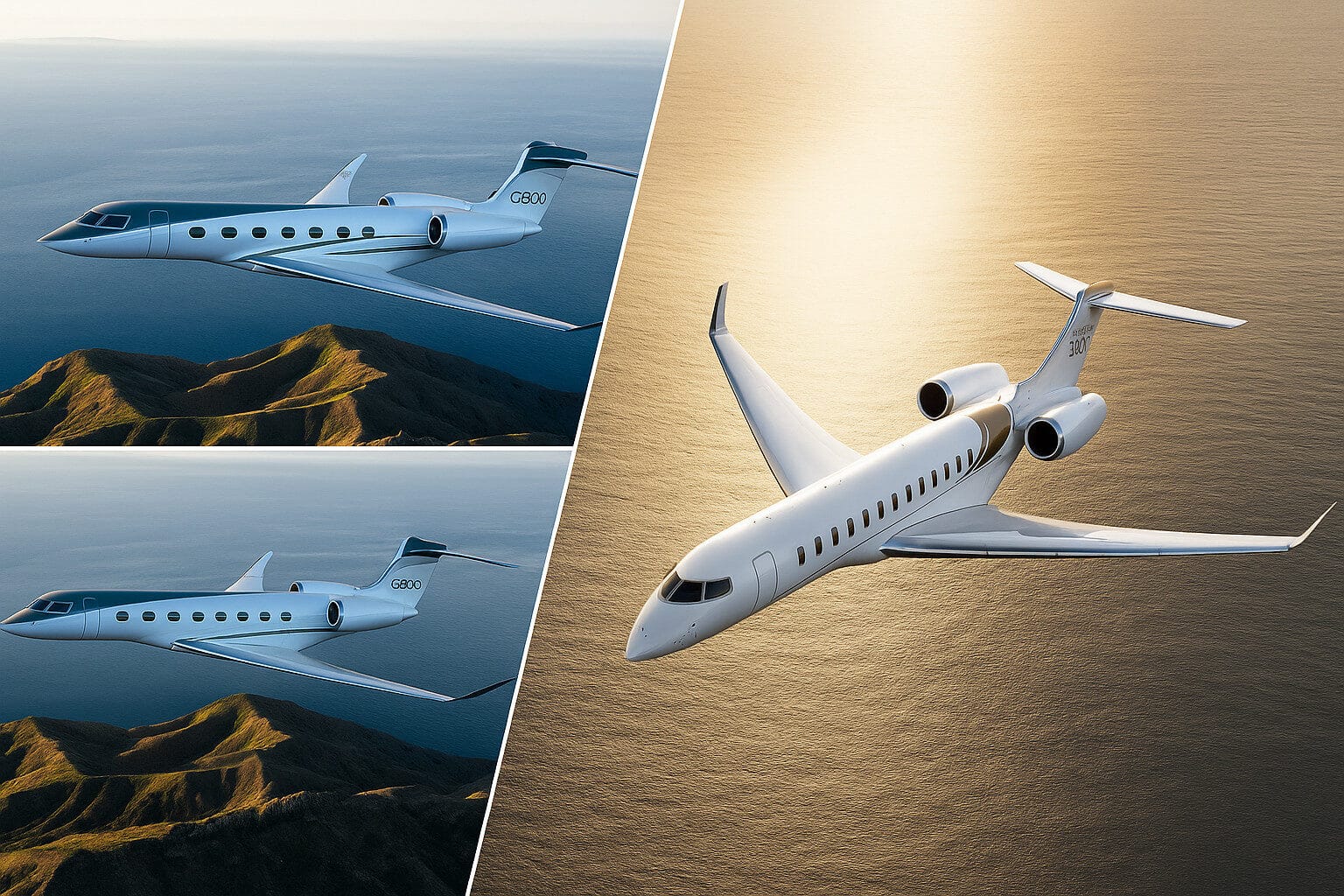The world’s largest private jets represent the pinnacle of luxury aviation, combining unprecedented cabin space with ultra-long-range capabilities and bespoke interior configurations. These flying palaces serve heads of state, royal families, and ultra-high-net-worth individuals seeking the ultimate in airborne comfort and privacy.
Defining “largest” in private aviation requires examining multiple dimensions including cabin volume, maximum takeoff weight (MTOW), wingspan, and passenger capacity in VIP configuration. The distinction between traditional business jets and VIP airliner conversions creates two distinct categories of large aircraft.
This comprehensive guide ranks the world’s largest private jets, comparing Boeing Business Jets (BBJ) and Airbus Corporate Jets (ACJ) widebody conversions against purpose-built large-cabin business aircraft from Gulfstream, Bombardier, and Dassault.
How We Define “Largest” in Private Aviation
Cabin Volume: The Primary Metric
Cabin volume measures interior space in cubic feet, determining how much usable area exists for VIP configurations including bedrooms, conference rooms, dining areas, and lounges. VIP airliner conversions like the BBJ 747-8 offer over 4,700 square feet of cabin space, while large-cabin business jets typically provide 1,500-2,000 cubic feet.
Interior volume directly impacts customization possibilities. Larger cabins accommodate full bedrooms with ensuite bathrooms, dedicated conference facilities, medical suites, and entertainment spaces impossible in smaller aircraft. Private jet charter companies increasingly offer these ultra-large cabin aircraft for group travel and special missions.
Wingspan & Fuselage Length
Physical dimensions determine airport infrastructure requirements and hangar compatibility. The Airbus ACJ350 XWB spans 212 feet wingtip-to-wingtip with a fuselage length of 219 feet, requiring specialized facilities unavailable at many private aviation terminals.
Longer fuselages enable more cabin zones with better sound insulation between areas. Wider wingspans generally correlate with better fuel efficiency and longer range capabilities essential for nonstop ultra-long-haul routes.
Maximum Takeoff Weight (MTOW)
MTOW measures total weight including aircraft structure, fuel, passengers, cargo, and equipment. The Boeing 747-8 VIP reaches 987,000 pounds MTOW, requiring reinforced runways unavailable at most private airports. MTOW directly affects operating costs, landing fees, and airport access restrictions.
Higher MTOW enables longer range with full passenger loads or additional fuel capacity for extended missions. This metric matters most for operators planning ultra-long-haul missions exceeding 7,000 nautical miles.
Passenger Capacity in VIP Configuration
Commercial airliners seat 300+ passengers, but VIP conversions typically accommodate 20-50 passengers depending on layout preferences. Traditional business jets in VIP configuration seat 12-19 passengers with significantly more space per person than commercial equivalents.
Capacity planning balances passenger count against cabin amenities. Royal flights might prioritize fewer passengers with maximum luxury, while corporate shuttles optimize for efficient group transport with premium comfort.
The Largest Private Jets in the World (2025 Rankings)
Complete Rankings Table
| Rank | Aircraft | Cabin Volume (sq ft) | Range (nm) | Type |
|---|---|---|---|---|
| 1 | Boeing 747-8 VIP (BBJ 747-8) | 4,786 sq ft | 8,000 nm | VIP Airliner |
| 2 | Boeing 787-8 Dreamliner BBJ | 2,400+ sq ft | 9,945 nm | VIP Airliner |
| 3 | Airbus ACJ350 XWB | 2,500+ sq ft | 10,400 nm | VIP Airliner |
| 4 | Airbus ACJ330neo | 2,000+ sq ft | 9,200 nm | VIP Airliner |
| 5 | Boeing 777X BBJ (Future) | 3,200+ sq ft | 11,000+ nm | VIP Airliner |
| 6 | Boeing 767 BBJ | 2,000 sq ft | 6,385 nm | VIP Airliner |
| 7 | ACJ320neo | 1,020 sq ft | 6,750 nm | Narrowbody VIP |
| 8 | Gulfstream G800 | 2,138 cu ft | 8,000 nm | Business Jet |
| 9 | Bombardier Global 8000 | 2,236 cu ft | 8,000 nm | Business Jet |
| 10 | Dassault Falcon 10X | 2,830 cu ft | 7,500 nm | Business Jet |
1. Boeing 747-8 VIP (BBJ 747-8) – The Undisputed Champion
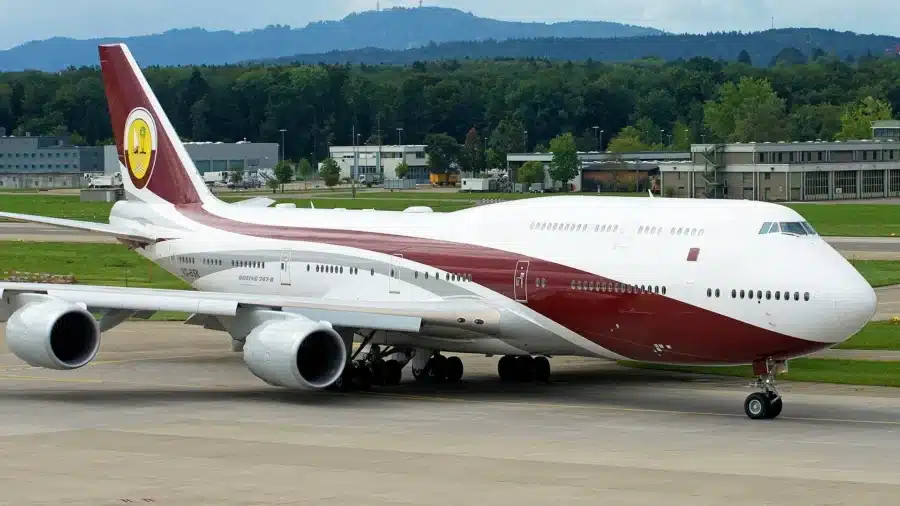
Cabin Volume: 4,786 square feet
Range: 8,000 nautical miles
MTOW: 987,000 lbs
Passenger Capacity: 25-50 (VIP configuration)
The Boeing 747-8 VIP represents the largest private jet ever delivered to private operators. This four-engine widebody conversion offers unmatched cabin space enabling palace-like interiors with multiple bedrooms, conference rooms, dining halls, and even medical suites.
Completions typically take 18-36 months at specialized facilities including Lufthansa Technik, Greenpoint Technologies, and AMAC Aerospace. Interior outfitting costs range from $100-300 million depending on customization level, often exceeding the base aircraft purchase price.
Primary operators include royal families and heads of state requiring extensive staff accommodation and security features. The Sultan of Brunei, Saudi royal family, and other Middle Eastern royalty operate 747-8 VIP aircraft with lavish interiors featuring gold-plated fixtures and ornate design elements.
Range capabilities enable nonstop flights between any two cities globally with full passenger loads and reserves. The aircraft’s four-engine redundancy provides additional safety margins for overwater operations, though modern twin-engine aircraft now match or exceed its range.
2. Boeing 787-8 Dreamliner BBJ – Modern Efficiency Meets Space
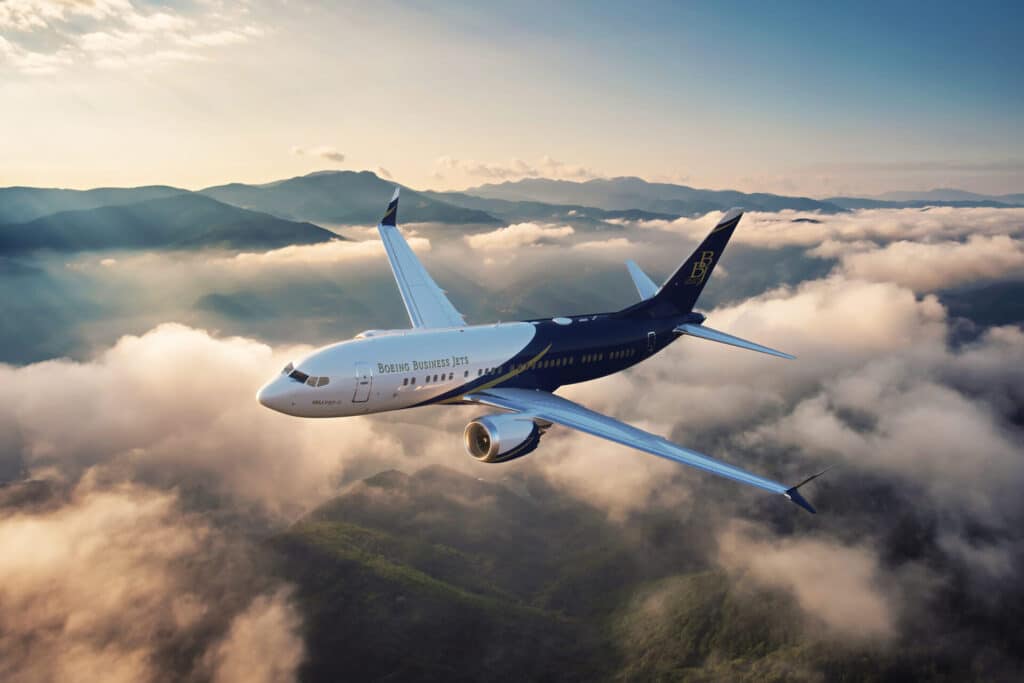
Cabin Volume: 2,400+ square feet
Range: 9,945 nautical miles
MTOW: 502,500 lbs
Passenger Capacity: 20-40 (VIP configuration)
The Boeing 787-8 Dreamliner BBJ combines advanced composite construction with ultra-long-range capabilities and whisper-quiet cabin environment. Carbon fiber composite fuselage enables higher cabin pressurization (equivalent to 6,000 feet altitude versus 8,000 feet in aluminum aircraft) reducing passenger fatigue on long flights.
Larger windows than any other commercial aircraft flood the cabin with natural light while electrochromic dimming eliminates traditional window shades. Advanced air filtration systems refresh cabin air more frequently than older designs, maintaining superior air quality throughout extended missions.
Heads of state including government leaders and military commands operate 787 BBJ variants for ultra-long-range missions. Mexico, South Korea, and several Middle Eastern nations have ordered 787 VIP conversions for presidential and royal transport.
Operating economics favor the 787 over four-engine alternatives with 20% lower fuel consumption and significantly reduced maintenance costs. Twin-engine reliability now matches or exceeds four-engine aircraft while providing operational flexibility and lower direct operating costs.
3. Airbus ACJ350 XWB – Longest-Range VIP Widebody
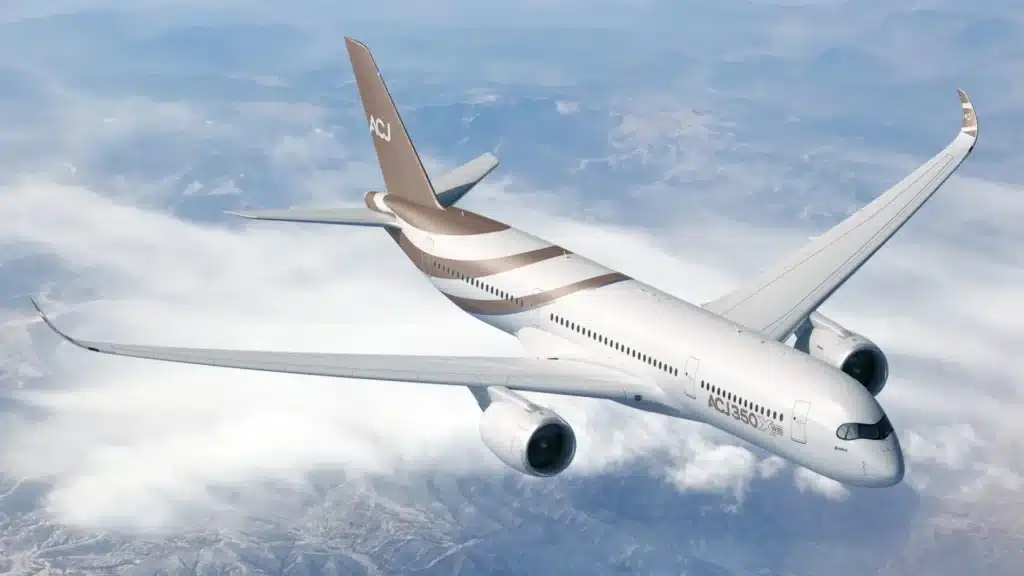
Cabin Volume: 2,500+ square feet
Range: 10,400 nautical miles
MTOW: 617,300 lbs
Passenger Capacity: 25-40 (VIP configuration)
The Airbus ACJ350 XWB delivers the longest range of any VIP widebody aircraft, enabling nonstop flights between virtually any two airports globally. Advanced aerodynamics, composite construction, and efficient Rolls-Royce Trent XWB engines provide exceptional fuel economy for its size.
Cabin width of 18.5 feet enables comfortable side-by-side seating arrangements and wider aisles than narrowbody alternatives. Advanced cabin management systems integrate lighting, entertainment, communication, and climate control through intuitive touchscreen interfaces.
The ACJ350 features Airbus’s signature wide cabin cross-section providing architectural flexibility for VIP completions. Designers create distinct zones including private suites, conference areas, and social spaces while maintaining excellent soundproofing between compartments.
Airbus Corporate Jets offers extensive customization support through partnerships with premier completions centers including Comlux, AMAC Aerospace, and Airbus Corporate Jet Centre. Delivery timelines typically span 24-30 months from order to completion.
4. Airbus ACJ330neo – Proven Widebody Platform
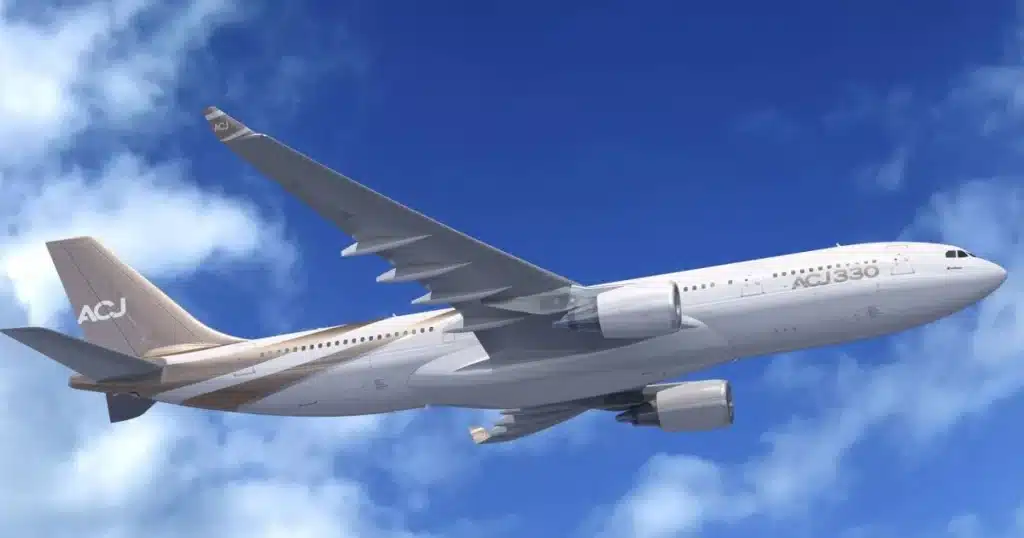
Cabin Volume: 2,000+ square feet
Range: 9,200 nautical miles
MTOW: 533,000 lbs
Passenger Capacity: 20-35 (VIP configuration)
The Airbus ACJ330neo updates the successful ACJ330 platform with new-generation engines and aerodynamic improvements delivering 25% lower fuel burn per seat. Rolls-Royce Trent 7000 or Pratt & Whitney PW1000G engines provide exceptional efficiency while meeting stringent noise regulations.
Government operators favor the ACJ330neo for presidential and ministerial transport, with multiple air forces worldwide operating the type. The aircraft’s reliability record and mature platform reduce operational risks compared to newer designs.
Wide cabin cross-section accommodates full-width beds, spacious bathrooms, and generous galley facilities supporting extended missions. Multiple lounge areas enable separation between staff and principals while maintaining efficient use of cabin space.
Lower acquisition costs compared to larger widebody alternatives make the ACJ330neo attractive for operators prioritizing capability over maximum size. Operating costs remain manageable while providing genuine widebody comfort and transcontinental range.
5. Boeing 777X BBJ (Future) – Next-Generation Giant

Cabin Volume: 3,200+ square feet (estimated)
Range: 11,000+ nautical miles (estimated)
MTOW: 775,000 lbs
Status: Development/Future deliveries
The Boeing 777X BBJ will become one of the world’s largest private jets when deliveries commence. Featuring composite wings with folding wingtips, advanced GE9X engines, and revolutionary cabin systems, the 777X platform promises unprecedented efficiency in the ultra-large VIP segment.
Cabin width of 20 feet provides the widest interior of any commercial aircraft, enabling unique layout possibilities including full-width staterooms and expansive social areas. Advanced cabin pressurization maintains lower equivalent altitude reducing passenger fatigue.
Potential operators include governments requiring maximum range and cabin space for transcontinental missions. The 777X’s efficiency advantages over older four-engine alternatives will drive operational cost savings despite larger initial acquisition prices.
Boeing Business Jets continues developing VIP variants of the 777X platform though specific completion timeline details remain confidential. Early interest from VIP operators suggests strong demand once certification completes.
6. Boeing 767 BBJ – Proven Workhorse
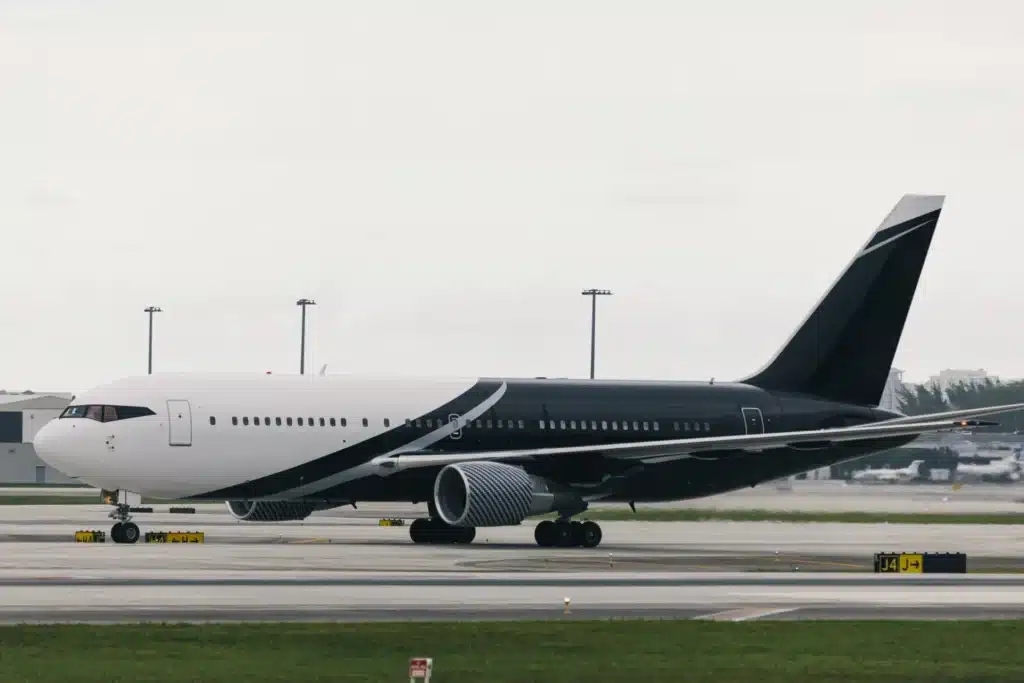
Cabin Volume: 2,000 square feet
Range: 6,385 nautical miles
MTOW: 412,000 lbs
Passenger Capacity: 20-30 (VIP configuration)
The Boeing 767 BBJ serves presidential and royal fleets worldwide providing reliable widebody comfort with manageable operating costs. Multiple configurations exist including the 767-200ER BBJ and larger 767-300ER variants offering increased range and cabin space.
Mature platform ensures parts availability and maintenance support globally, critical for government operators requiring high dispatch reliability. Numerous air forces operate 767 variants for VIP transport, aerial refueling, and specialized military missions.
Cabin width of 15.5 feet provides true widebody comfort while remaining more economical than larger alternatives. Twin-aisle configuration enables efficient passenger movement and crew service during flight.
Several aircraft management companies specialize in 767 BBJ operations, providing turnkey solutions for governments and private operators seeking professional management without in-house aviation departments.
7. ACJ320neo – Narrowbody Excellence
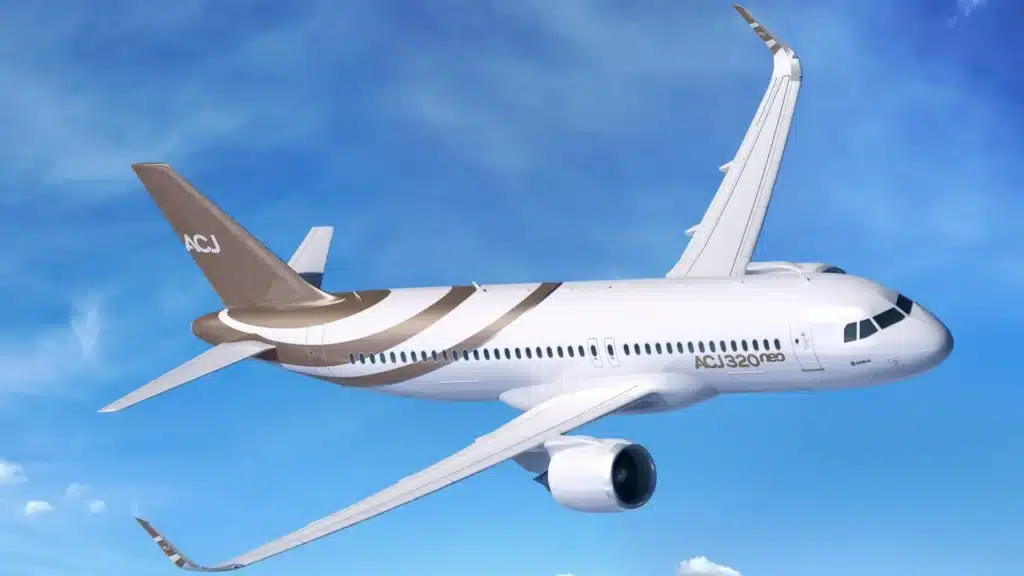
Cabin Volume: 1,020 square feet
Range: 6,750 nautical miles
MTOW: 174,200 lbs
Passenger Capacity: 15-25 (VIP configuration)
The Airbus ACJ320neo leads the narrowbody VIP segment with exceptional range, modern cabin systems, and proven reliability. New-generation Pratt & Whitney PW1100G or CFM LEAP engines deliver 20% fuel savings while reducing noise footprint.
Corporate operators favor the ACJ320neo for executive shuttle missions and long-range corporate travel. Cabin space accommodates full bedroom, conference area, and lounge while maintaining efficient operating economics compared to widebody alternatives.
High-net-worth individuals appreciate the ACJ320neo’s ability to access airports unavailable to larger aircraft while providing transcontinental range. The aircraft serves as primary transportation for entrepreneurs, sports teams, and entertainment industry clients.
Completions by Lufthansa Technik, Comlux, and AMAC transform ACJ320neo platforms into flying offices and residences. Bespoke interiors feature designer fabrics, custom woodwork, and state-of-the-art entertainment systems.
8. Gulfstream G800 – Purpose-Built Large-Cabin Champion
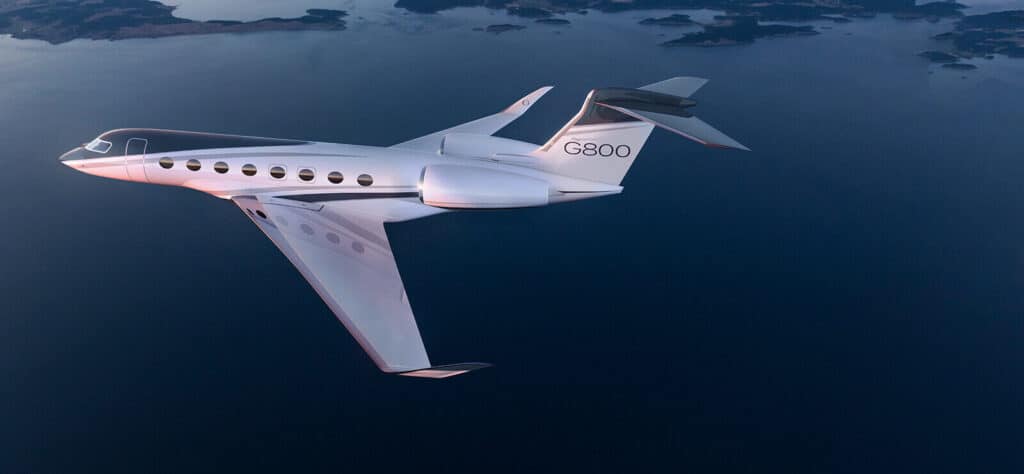
Cabin Volume: 2,138 cubic feet
Range: 8,000 nautical miles
MTOW: 105,600 lbs
Passenger Capacity: 19 passengers / sleep 10
The Gulfstream G800 represents the largest purpose-built business jet from the legendary manufacturer. Four distinct living areas provide unprecedented flexibility for long-range missions, while the quietest cabin in business aviation ensures productive work environment and restful sleep.
Advanced Symmetry Flight Deck incorporates active control sidesticks and next-generation avionics reducing pilot workload. Fly-by-wire flight controls optimize performance across the entire flight envelope while enhancing passenger comfort through turbulence.
Sixteen panoramic oval windows flood the cabin with natural light while Gulfstream’s signature low cabin altitude of 4,850 feet at maximum cruise altitude reduces fatigue. 100% fresh air enters the cabin every two minutes maintaining superior air quality.
Gulfstream Aerospace delivers G800 aircraft with comprehensive completion including premium materials, advanced cabin management systems, and full certification. Unlike VIP airliner conversions requiring third-party completion, the G800 arrives ready to fly.
9. Bombardier Global 8000 – Range and Comfort Leader
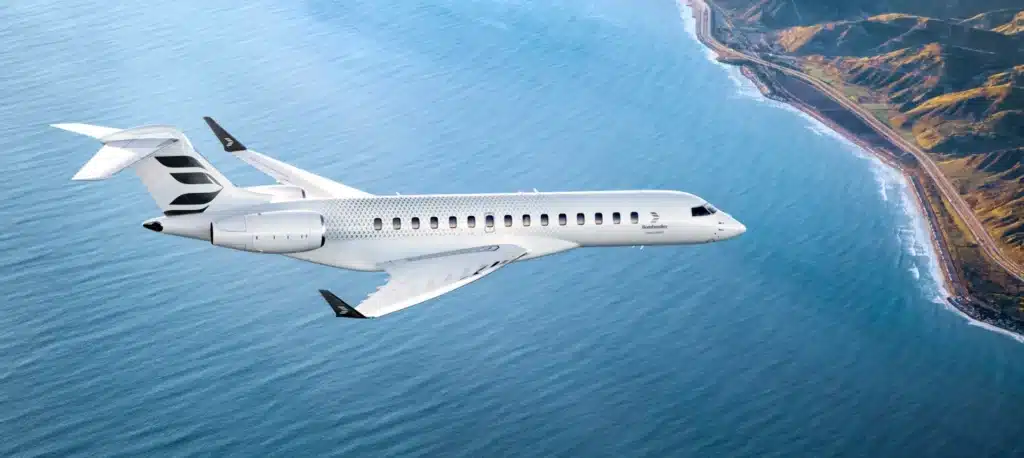
Cabin Volume: 2,236 cubic feet
Range: 8,000 nautical miles
MTOW: 115,000 lbs
Passenger Capacity: 19 passengers / sleep 10
The Bombardier Global 8000 delivers the industry’s longest cabin at 54.5 feet, enabling four true living spaces optimized for work, dining, relaxation, and rest. The revolutionary Nuage seating system provides unmatched comfort with patented zero-gravity position.
Smooth ride comes from Bombardier’s advanced wing design and flight control systems managing turbulence automatically. The cabin maintains sea-level pressure equivalent at typical cruise altitudes, significantly reducing passenger fatigue on ultra-long-range missions.
Pure Air purification system neutralizes allergens and pathogens while advanced humidity control maintains comfortable moisture levels impossible in older business jet designs. Circadian lighting systems sync with time zones helping passengers adjust to destination time.
Bombardier Business Aircraft positions the Global 8000 against both large-cabin business jets and smaller VIP airliner conversions. Operating economics favor the purpose-built business jet despite impressive capabilities.
10. Dassault Falcon 10X – Widest Cross-Section Business Jet
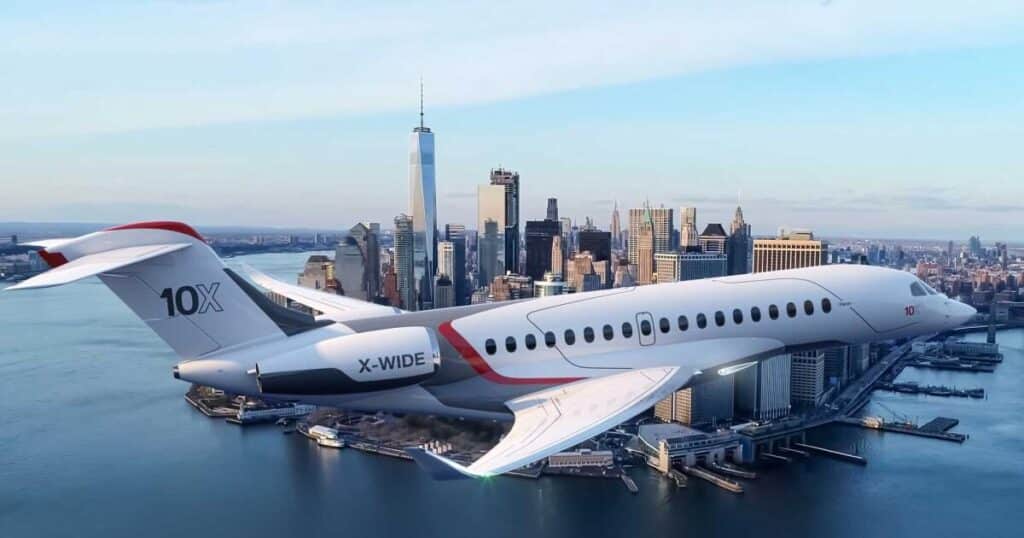
Cabin Volume: 2,830 cubic feet
Range: 7,500 nautical miles
MTOW: 115,000 lbs
Passenger Capacity: 19 passengers
The Dassault Falcon 10X features the widest cabin cross-section of any purpose-built business jet at 9.1 feet, approaching narrowbody airliner dimensions. This enables stand-up shower, full-size galley, and expansive living areas unprecedented in traditional business aviation.
Advanced digital flight control system developed from Dassault’s fighter jet heritage provides exceptional handling and efficiency. The aircraft will incorporate next-generation Rolls-Royce Pearl engines optimized for the Falcon 10X platform.
Thirty-eight large windows create the brightest cabin in business aviation while advanced soundproofing ensures library-quiet environment. Dassault’s signature high-speed performance enables shorter trip times on transcontinental routes.
Dassault Aviation expects first deliveries in 2026 with strong order book despite premium pricing. The Falcon 10X competes against established G700 and Global 8000 while offering unique cabin dimensions and French design heritage.
VIP Airliner Conversions vs Traditional Business Jets
Cost Comparison Analysis
VIP airliner conversions require significantly higher capital investment with aircraft acquisition costs of $100-300 million for widebody platforms plus $50-200 million for completion work. Total investment often reaches $300-500 million for ultra-luxury 747-8 or ACJ350 configurations.
Large-cabin business jets like the Gulfstream G800 or Bombardier Global 8000 cost $70-80 million fully equipped and delivered. While substantial, this represents one-fifth to one-seventh the cost of comparable widebody VIP conversions.
Operating costs diverge dramatically with widebody VIP aircraft consuming 3-4x more fuel hourly than large business jets. Pilot training, maintenance reserves, insurance, and hangar costs all scale with aircraft size creating ongoing expense differentials.
Cabin Configuration Flexibility
VIP airliners provide unmatched customization possibilities with 2,000-4,000+ square feet enabling full bedrooms with king-size beds, walk-in closets, full showers, dedicated offices, conference rooms seating 12+, formal dining for eight, medical facilities, and security command centers.
Large-cabin business jets optimize 1,500-2,200 cubic feet of cabin volume for executive transport with thoughtful layouts including private staterooms, conference areas, and premium galleys. While luxurious, physical constraints limit bedroom size and multi-room configurations.
Completion timelines differ substantially with VIP airliner projects spanning 18-36 months for complex outfitting versus 12-18 months for business jet completions. Project management complexity increases dramatically for airliner conversions requiring coordination among multiple specialized subcontractors.
Maintenance & Operating Costs
VIP airliner operating costs reach $15,000-25,000 per flight hour including fuel, crew, maintenance, insurance, and fixed costs. Annual budgets of $5-10 million maintain aircraft in continuous airworthy condition even with limited flying.
Business jet operating costs range from $5,000-8,000 per flight hour for ultra-long-range aircraft with annual budgets of $2-4 million supporting typical utilization. Economies of scale favor business jets for most private aviation missions.
Crew requirements differ with VIP airliners mandating minimum three-pilot crews plus cabin staff of 4-8 flight attendants. Business jets operate with two pilots and 1-2 cabin attendants reducing personnel costs significantly.
Runway Requirements
Widebody VIP aircraft require 8,000-10,000 foot runways limiting operations to major airports with appropriate infrastructure. Weight restrictions and noise regulations further constrain destination options particularly in Europe and environmentally sensitive regions.
Large-cabin business jets operate from 5,000-6,000 foot runways accessing thousands of airports worldwide. This flexibility enables direct flights to resort destinations, private airports, and secondary terminals unavailable to widebody aircraft.
Airport fees scale with aircraft MTOW creating substantial cost differences. A 747-8 VIP generates $10,000-20,000 in landing fees, handling charges, and parking at major international airports versus $2,000-5,000 for business jets.
For comparison of operating environments, explore private jet airports offering dedicated facilities for business aviation.
Notable Owners and Famous Operators
Royal Families and Heads of State
Saudi Royal Family operates the world’s largest private jet fleet including multiple 747 VIP aircraft, 787 BBJ conversions, ACJ variants, and extensive large-cabin business jet inventory. Aircraft feature elaborate interiors with gold-plated fixtures and intricate arabesque designs.
Sultan of Brunei owns one of history’s most famous 747-400 VIP conversions featuring solid gold washbasins, premium silk carpets, and Lalique crystal accents throughout. The aircraft rarely flies publicly, maintaining mystique around its opulent interior.
Government of Mexico operates a 787-8 BBJ previously used for presidential transport. The aircraft features moderate VIP configuration balancing comfort with operational efficiency appropriate for government service.
United States government operates two 747-8 aircraft designated VC-25B that will replace the current Air Force One fleet. While technically military aircraft, these represent the ultimate VIP conversions with secure communications, aerial refueling capability, and defensive systems.
Corporate and Private Owners
Several technology billionaires operate widebody VIP aircraft though specific ownership details remain confidential for security and privacy reasons. These aircraft typically feature understated luxury focusing on productivity and comfort over ostentatious display.
Sports teams and entertainment industry clients charter large VIP aircraft for group transport though rarely own widebody conversions due to operating costs. Charter services provide access without ownership burden.
Private owners of ultra-large-cabin business jets include entrepreneurs, hedge fund managers, and family offices requiring global mobility with premium comfort. The G800 and Global 8000 serve this market providing widebody-like space with business jet economics.
The Future of Large Private Jets
Next-Generation Aircraft Development
Airbus ACJ TwoTwenty based on the A220-100 platform will deliver modern efficiency in the narrowbody VIP segment. Six living zones within 73-foot cabin provide unprecedented space for the size category with range exceeding 5,650 nautical miles.
Boeing 777-9 BBJ variants under consideration would become the largest private jets physically, though market demand remains uncertain given operational costs and runway requirements. Launch depends on firm orders from government or royal customers.
Hydrogen-electric concepts remain decades from certification though manufacturers explore propulsion alternatives for environmental reasons. Sustainable Aviation Fuel (SAF) provides more immediate emissions reduction pathway.
Technological Innovations
Advanced materials including next-generation composites reduce structural weight enabling increased range or payload capacity. Carbon fiber costs continue declining making composite construction economically viable across more aircraft types.
Next-generation engines from Rolls-Royce, GE Aviation, and Pratt & Whitney deliver 15-25% efficiency improvements through advanced core designs, adaptive cycles, and hybrid-electric augmentation systems under development.
Cabin connectivity via high-throughput satellite communications enables streaming video, cloud computing access, and video conferencing indistinguishable from ground-based networks. Starlink and other LEO constellations promise even higher bandwidth at lower costs.
Market Trends and Demand
Government demand drives widebody VIP aircraft orders as nations update aging presidential and royal fleets. Long replacement cycles mean orders trickle in rather than surging, but provide steady baseline demand.
Large-cabin business jets see stronger demand from private buyers prioritizing value, operating efficiency, and airport access over maximum cabin space. This segment grows faster than VIP airliner conversions.
Fractional ownership and charter increasingly provide access to large-cabin aircraft without full ownership. Fractional ownership programs reduce capital requirements while maintaining consistent access.
Sustainability Pressures
Regulatory pressure increases on large private aircraft through carbon taxes, emissions trading schemes, and potential flight restrictions. The European Union considers limitations on private jet operations during climate emergencies.
Sustainable Aviation Fuel blending mandates reach 10% in Europe by 2030 with higher percentages planned through 2050. SAF costs 2-4x conventional jet fuel currently, adding $2,000-5,000 per hour operating costs for widebody VIP aircraft.
Carbon offset programs enable operators to neutralize emissions through verified environmental projects. While voluntary today, mandatory offset requirements may emerge as climate policies evolve globally.
Operators increasingly emphasize environmental stewardship through aircraft efficiency upgrades, optimized flight planning, and sustainable fuel adoption addressing public criticism of private aviation environmental impacts.
Conclusion
The world’s largest private jets divide into two distinct categories: VIP airliner conversions offering palace-like space and ultra-long-range business jets optimizing efficiency with impressive capability. The Boeing 747-8 VIP remains the undisputed size champion with nearly 5,000 square feet of cabin space, while modern designs like the ACJ350 XWB deliver longest range capabilities exceeding 10,000 nautical miles.
Purpose-built large-cabin business jets from Gulfstream, Bombardier, and Dassault provide compelling alternatives combining generous space with manageable operating costs and superior airport access. The G800, Global 8000, and upcoming Falcon 10X serve most private aviation missions more economically than widebody conversions.
Future developments focus on efficiency improvements through advanced engines, composite structures, and sustainable aviation fuels rather than pure size increases. Market demand favors optimized capability over maximum dimensions as operators balance luxury aspirations with economic and environmental realities.
The choice between VIP airliner conversions and large-cabin business jets ultimately depends on mission requirements, budget considerations, and whether maximum space or operational flexibility takes priority. Both categories deliver extraordinary luxury and capability representing the pinnacle of private aviation achievement.
Authors
-
Radu Balas: Author
Pioneering the intersection of technology and aviation, Radu transforms complex industry insights into actionable intelligence. With a decade of aerospace experience, he's not just observing the industry—he's actively shaping its future narrative through The Flying Engineer.
View all posts Founder
-
Cristina Danilet: Reviewer
A meticulous selector of top-tier aviation services, Cristina acts as the critical filter between exceptional companies and industry professionals. Her keen eye ensures that only the most innovative and reliable services find a home on The Flying Engineer platform.
View all posts Marketing Manager
-
Marius Stefan: Editor
The creative force behind The Flying Engineer's digital landscape, meticulously crafting the website's structure, navigation, and user experience. He ensures that every click, scroll, and interaction tells a compelling story about aviation, making complex information intuitive and engaging.
View all posts Digital Design Strategist

